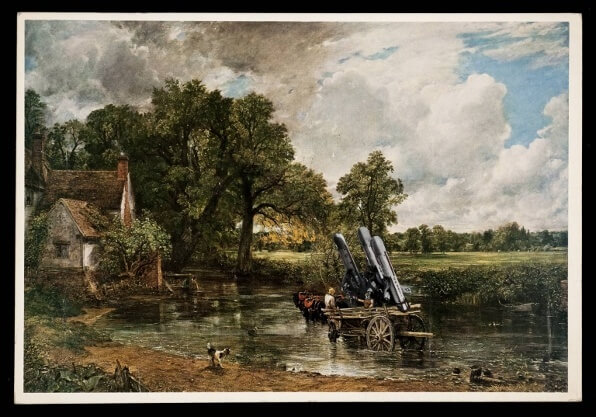
There was some wonderful news today as the National Gallery announced the end of its long-standing sponsorship arrangement with controversial weapons manufacturer Finmeccanica a year before the contract was due to run its course. Organisations like CAAT and Stop the Arms Fair
have conducted an amazing campaign, using public pressure and creative interventions to make the gallery squirm. There was a letter in the Guardian signed by various artists, a gallery of art inspired by the sponsorship relationship, and an intervention carried out on BBC’s The Revolution Will Be Televised (see below).
There are obvious parallels between the way that oil and arms manufacturers use cultural sponsorship – both highly controversial companies using the “cultural fuzzies” to paper over the destructive nature of their activities. Sarah Waldron, the Campaign Against The Arms Trade campaigner said in a press release:
This deal gave practical support to Finmeccanica’s business activities but, more importantly, the company was able to use the Gallery’s facilities and prestige to give the appearance of legitimacy to its work. We hope the end of this relationship marks a recognition that arms companies and their deadly deals have no place in our arts institutions.
What’s the significance of this announcement for the many people who are trying to get arts galleries to drop oil sponsorship? Although the Guardian has reported that the decision was Finmeccanica’s, I’m basing this on the presumption that there was some degree of mutuality involved in the decision.
Firstly, this confirms what we knew already, that cultural institutions are sensitive to public pressure and creative campaigning. It’s unthinkable that this decision would have been taken without a stink being kicked up by the public and the efforts of the various campaign groups involved.
Secondly, critics are constantly suggesting that arts institutions are not in any position to turn down money in the current financial climate. It’s simply unthinkable. That clearly hasn’t been the case with the National Gallery. One suspects that they’ve made what might have been a difficult decision, but that they’ve creatively adapted their plans so that they can continue without it significantly affecting their operations. Just like the Formula One events did when they were stopped taking tobacco money.
Thirdly, it turns out that there are ethical sponsorship lines to be drawn after all! Another criticism of the campaign that is commonly bandied about is “all money is dirty, so we can’t make judgements.” Well, the National Gallery just made a decision that profiting from senseless murder wasn’t acceptable – albeit with a little encouragement from the public. Gallery executives can’t pretend to float in some moral vacuum that’s abstracted from the challenging questions of money and power that society faces as a whole. We know that fossil fuel companies present one of the biggest challenges to dealing with climate change, and have some of the worst human rights and environmental abuse records of any corporate sector, so galleries like Tate need to start thinking about how they’re going to adapt to the fact that that ‘line of acceptability’ has shifted in the public eye already.